Sometimes there is nothing nicer than a comforting, warm meal, particular in winter if you live somewhere a bit cold and dark. Other times you probably want a cool, light meal. As we seem to enjoy consuming a variety of temperatures, is it possible that our pets also have a preference? Does your cat or dog care how hot or cold their food is? To answer this question we will investigate your pet’s diet and food preferences in order to help you provide them with the most enjoyable culinary experience possible.
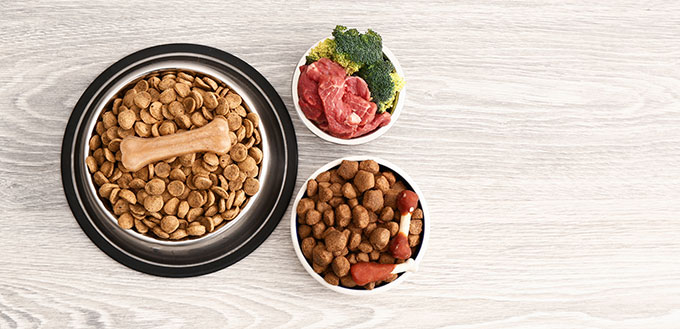
Your Dog’s Diet
The first thing you have to understand about your pet is what they can and can’t eat. Your dog is an omnivore. This can be a bit of a surprise to dog owners who think of their pets as the descendants of wolves, who are carnivorous. But, the truth is their relationship is probably more distant than you think when it comes to food.
Wolves eat a lot more meat than dogs, while dogs need a bit more balance in their diet. They need a variety of proteins, carbohydrates, vitamins, and minerals. Dog food will have a combination of these things, such as beef, grains, cereals, vitamins and antioxidants. It also means that you can feed them foods such as:
- Carrots
- Peanut butter
- Eggs
- Cooked Salmon
- Plain popcorn
- Oatmeal
Be aware that dogs cannot necessarily consume all vegetables, fruits or meats. Double check before you feed them anything new. Make sure there are no choking hazards, such as bones or seeds, and keep everything is in moderation. Just because your dog can eat peanut butter, doesn’t mean it should be their main meal.
Don’t let your dog decide what they are going to eat as many dogs are well known gluttons who will eat anything, including many foods that are very bad for them. This might include foods that they shouldn’t have too much of, like bites of your burger at a barbecue, and food that will poison them, like chocolate.
Your Cat’s Diet
While dogs are omnivores, cats are obligate carnivores. This means there is a lot less variety in the food your cat can eat because they primarily need to consume animal products. Some carnivores cannot digest anything except animal matter, or even specifically just meat, but cats can eat some things beside meat and fish. This could include:
- Egg
- Cheese
- Grains
- Cantaloupe
- Broccoli
- Asparagus
These foods must be carefully controlled, particularly fatty foods, such as cheese, and it is always a good idea to seek professional advice before offering any foods that you are unsure about. It is also interesting to note that cats cannot taste sweet things, so avoid sweet vegetables and fruit.
Most cat foods will still have grains because, although they need a high protein, low carbohydrate diet, this is not the same as a high protein, no carbohydrate diet. Unfortunately, grain is much cheaper than meat, and this can mean that some low quality cat food brands may put in more grain than is ideal for your cat. It is worth researching cat foods to try and avoid this.
You should also be aware that your cat will need much more protein when they are a kitten. Luckily, most brands offer specific kitten food that have a very high protein content to support their energy and growth.
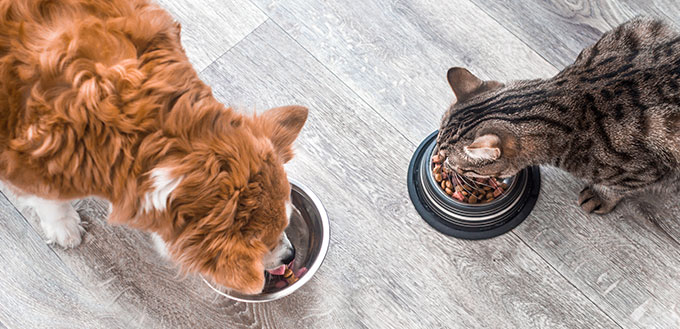
Providing Cooked Food for Your Pet
It is clear that both your dog and your cat enjoy protein, and, considering their ancestry as wild cats and wolves, you may debate whether they need raw food or cooked food. It isn’t always clear how packaged, commercial food is prepared, so if you are considering preparing your pet’s food yourself, you will need to know how to prepare their meals.
The most important thing you need to know is that you should never use a human diet as the basis of your pet’s diet – even if that diet is designed to be entirely ‘natural’. Natural vegan diets, for example, are not going to provide enough protein for your cat and will cause them health problems. Similarly, you should be careful about creating a raw food diet for your dog or cat.
Dogs and cats can process raw meat, which means you can incorporate it into their diet. However, there are some serious risks involved for both you and your pet, and the research into its benefits is quite inconclusive. If you are going to offer your pet raw meat, you must:
- Wash your hands before and after preparing the meat
- Keep the meat, and anything the meat touches, very separate from other foods
- Wash anything the meat touches immediately and thoroughly with warm water and washing up liquid
- Buy the best quality and safest meat you can from reputable sources
- Seek advice from medical professionals
- Watch out for any changes in health or symptoms and be prepared to switch back to cooked food immediately
We feel it is important to note that the American Veterinary Medical Association does not recommend providing raw food due to the bacteria and pathogens that can come with raw meat. If your dog or cat already has a weakened immune system, they could be at particular risk.
When cooking for your pet, you should ensure it is cooked all the way through and has experienced temperatures of at least 145 degrees Fahrenheit to remove any pathogens or bacteria, but do not serve it at this temperature. You must also not add any additional salt, seasonings or flavorings that your pet may not be able to handle. Keep it plain to keep it safe. Alternatively, you may opt for some freeze dried food options for your pooch.
Heating Up Their Meal
Now you know that cooked food is better than uncooked food, the most important question to ask is: what temperature should I make my pet’s meal? Is it better for you to serve home cooked food when it is still warm, or, if you use commercial pet food, should you heat it up?
Warm food is so inviting for us, so it is easy to argue that a nice warm bowl of chicken pieces is going to be more appetizing for your beloved pet than cold leftovers, but it is also important to remember that we should try not to anthropomorphize our pets too much. This means giving them human characteristics.
The truth is much of our relationship with food can be psychological. For example, a hot cup of cocoa after a cold walk home has very specific connotations for us humans that can make us happy, and that will not translate over to your dog and cat. But there may be other reasons to heat up their food.
- Dogs and cats can both taste their food through its scent. This can mean they start to pick up the flavor of their food before they start to eat. Warm food that is between 93 and 103 degrees Fahrenheit will increase this scent and make the experience even tastier and more pleasant for your pet.
- In nature, your dog or cat would catch and kill their own prey. Prey tends to remain warm as predators consume their meal, and this means that both cats and dogs are more naturally inclined to eat warm food.
- Although many pet parents don’t think about it, if you store your pet’s food in the fridge you aren’t even serving them food at room temperature, you are serving it cold. As most brands advise that the food is, at least, at room temperature, a common reason for using the microwave on pet food is to restore it to a palatable temperature.
- Ill or old animals are less motivated to eat, but often most need to in order to provide the energy they need to heal. Warming food can make it more enticing to these dogs and cats. This might also work on a fussy eater.
Check out our Dog Food for Picky Dogs.
If you are going to heat up your pet’s food, there is a lot of discussion and debate about the best way to do it. Microwaving is, perhaps, the most common method. However, experts often highlight that microwaving can kill off many essential nutrients that your dog needs. They recommend that you use hot water instead. You do this by immersing the food in boiling water while it is still in the bag, or another protective container. You shouldn’t boil the food because nutrients will be lost in the water.
You may also like our guide on Dog Food Storage Containers.
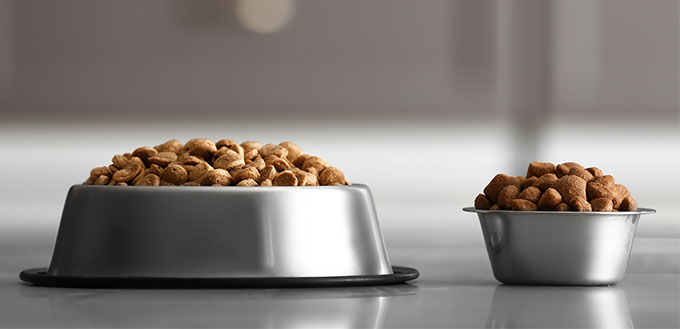
Is it Normal to Heat Up Your Pet’s Food?
Ultimately, the decision to heat up your pet’s food is completely yours. It can be a lot of fuss for not much obvious benefit, which is why only 24% of dog owners actually bother to heat their dog’s food. However, it is also a great technique if you store your pet’s food in the fridge or if you need to encourage them to eat. Otherwise, it is simply just up to you and your pet’s individual personal preference.
The most important thing is that your pet’s food is not too hot and not too cold. Body temperature is a good aim to set for yourself. This is about 101F to 102.5F. Try not to go hotter than this. If you have concerns that it might be too hot for your skin, it is definitely too hot for an animal’s mouth. It is probably a good idea to keep a thermometer around to double check.
Source:
- How Many People Warm Their Dog’s Food?, American Kennel Club


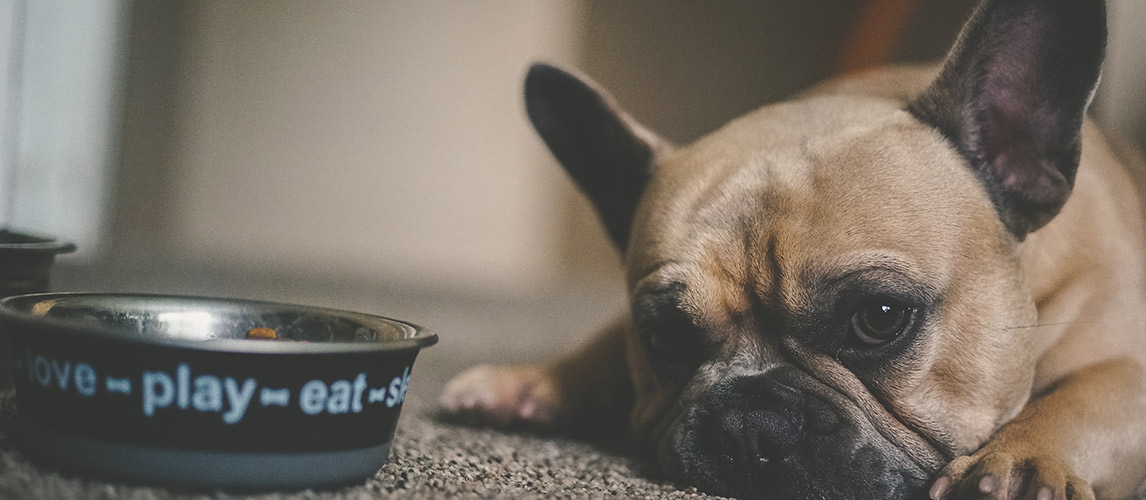
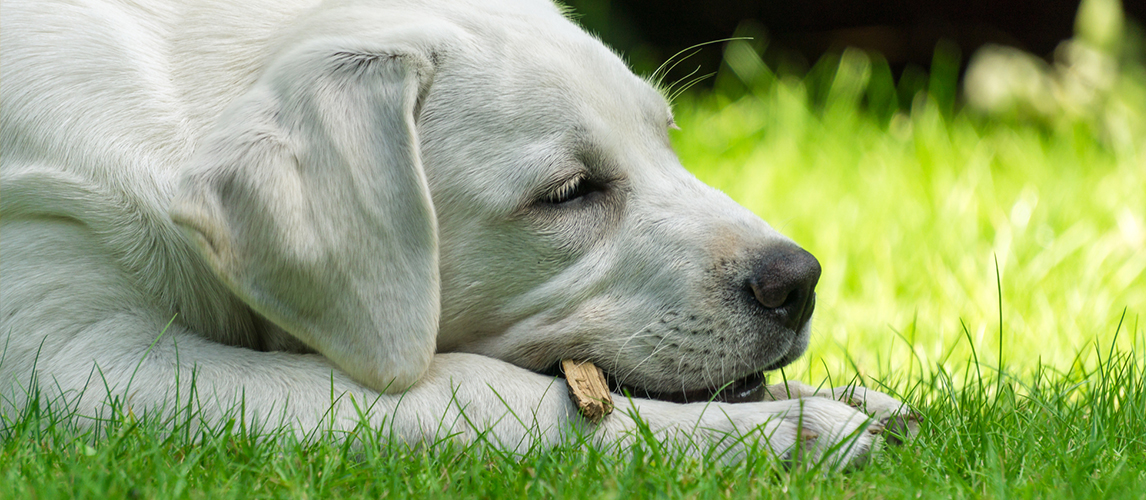



I learned alot
Just a quick thank you for this great article on pet food temperature !! 🙂